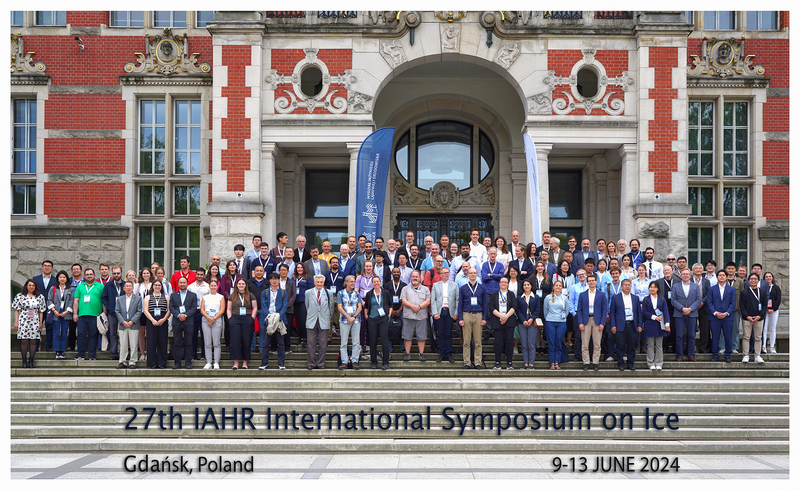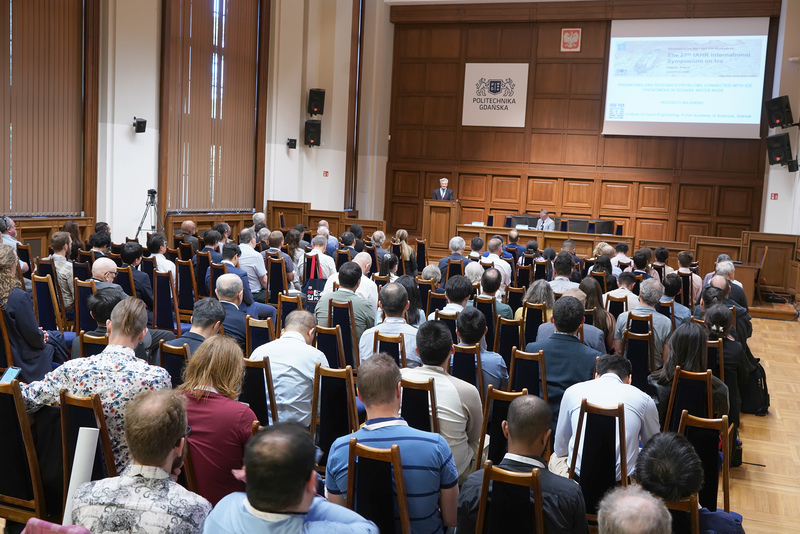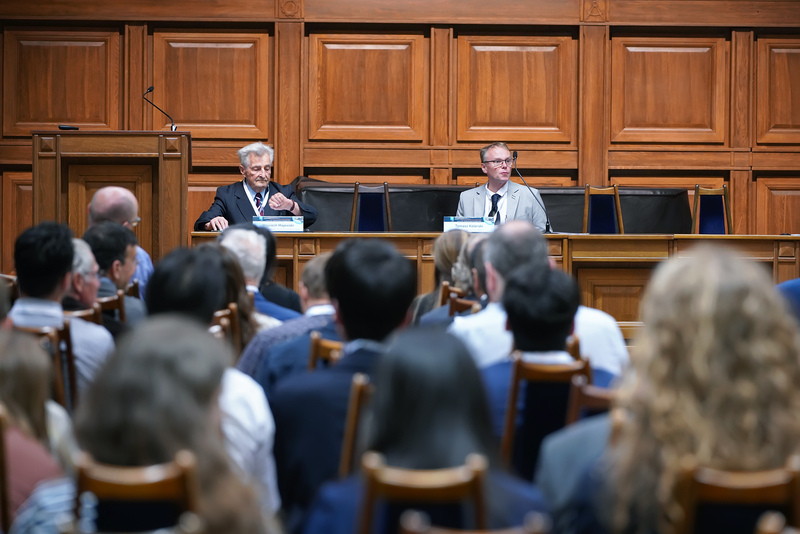Summary Report of the 27th IAHR International Symposium on Ice
History Topics Keynotes Award Download Report Keep Updated
The 27th IAHR International Symposium on Ice was held in Gdańsk, Poland, between 9 and 13 June 2024.
The Congress gathered 153 scientists and industry professionals from 14 countries. Organized by Gdańsk University of Technology, the event focused on key global ice-related challenges, including ice mechanics, ice-structure interactions, climate change impacts on the cryosphere, and offshore wind development in the Baltic Sea. With 93 papers in the published conference proceedings, the symposium showcased diverse methodologies and multidisciplinary research on sea and river ice dynamics, as well as engineering challenges in cold regions. The event fostered engaging discussions and facilitated collaboration, reinforcing its role as a leading platform for advancing ice research.
Due to the significant engagement of Tomasz Kolerski in river ice studies and his role as Chair of the IAHR Technical Committee Ice Research and Engineering since 2022, the opportunity to host the 2024 symposium at Gdańsk University of Technology was awarded. Organizing such a prestigious event entails the responsibility of ensuring the highest standards in both scientific content and organizational quality. Tomasz Kolerski served as the chair of the symposium, while Parisa Radan acted as the main secretary.
Furthermore, the symposium provided a valuable opportunity for building connections between institutions, promoting further collaboration and knowledge exchange.
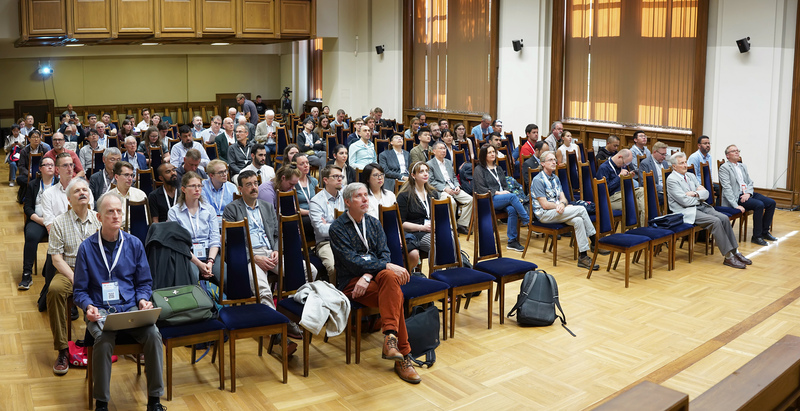
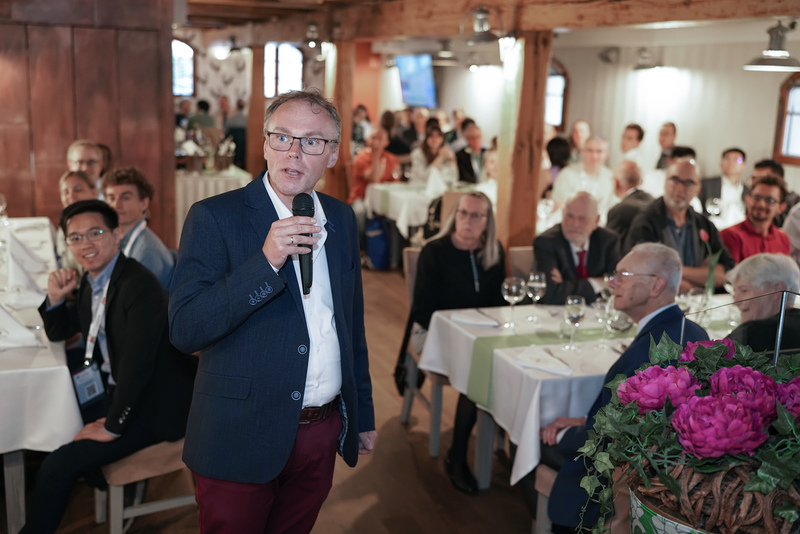
Short history of the Ice Symposium
The IAHR Symposium on Ice has a longstanding history, beginning in 1970 with its inaugural conference in Reykjavik. Since that time, this prestigious event has continued biennially, held in various global locations under the auspices of the International Association for Hydro-Environment Engineering and Research (IAHR). The honor of hosting the symposium is extended to the world’s leading institutions in ice research, representing three continents: Europe, North America, and Asia.
This rotation highlights IAHR’s commitment to promoting advancements in ice research through a diverse international exchange. By moving the conference across continents, the IAHR ensures a broader representation of global expertise, fostering regional participation and engagement. The geographical diversity not only enhances the scope of scientific dialogue but also strengthens the local research communities by offering them the opportunity to contribute more actively to the international ice research field.
Observing climate changes in recent years has led to a twofold effect on the field of ice research. On one hand, the rising temperatures have resulted in decreased interest in traditional ice phenomena, temperatures continue to rise, certain countries have witnessed a reduction in the frequency and extent of ice-related phenomena, leading to a diminished focus on ice research in those areas. On the other hand, these same climate changes have generated entirely new areas of study, driven by increasingly unpredictable climatic events. The acceleration of ice melt, shifts in seasonal patterns, and the emergence of novel phenomena like mid-winter ice jam processes, more accessible Arctic regions for natural resources exploration, and the increasing demand for renewable offshore energy sources have sparked a renewed interest in understanding the dynamics of ice in changing environments. These new challenges create opportunities for innovative research into how altered climate patterns affect ice behavior, river and sea ice dynamics, and associated hydrological risks, calling for a rethinking of traditional models and approaches to ice studies.
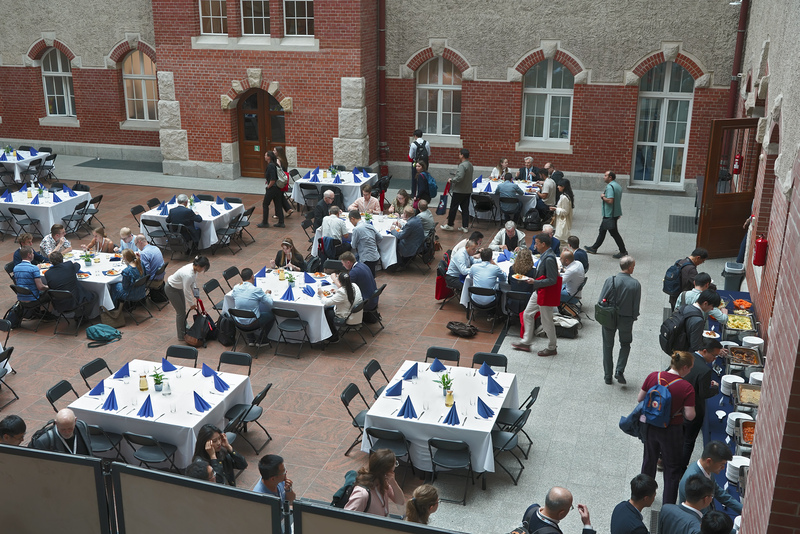
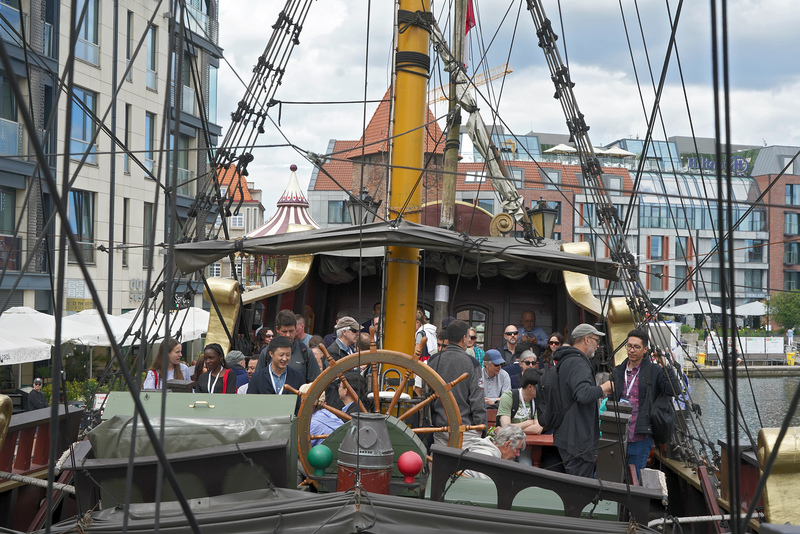
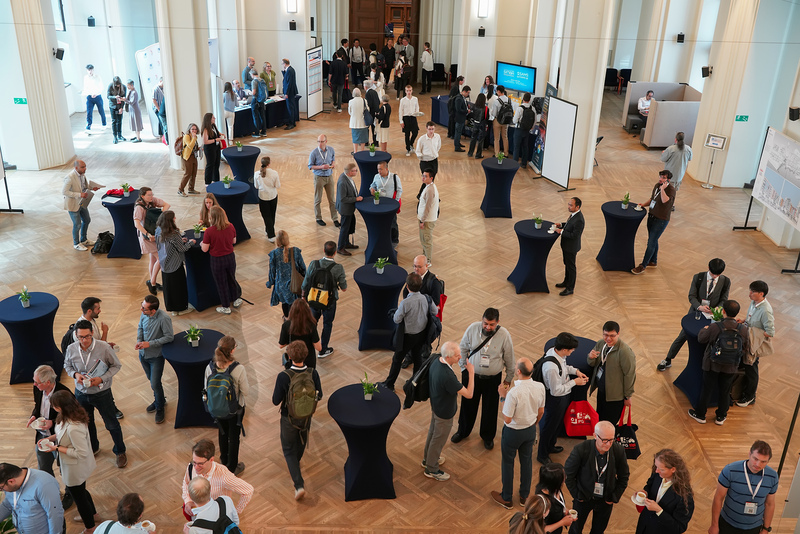
The local organizing committee of the 27th IAHR International Symposium on Ice was composed of the following members: Wojciech Artichowicz, Beata Jaworska-Szulc, Joanna Kaliszuk, Patrycja Mikos-Studnicka, Krzysztof Szarf, Katarzyna Weinerowska-Bords, Maciej Wróblewski, Witold Tisler, and Bogusław Pawłowski, a faculty member of Nicolaus Copernicus University in Toruń (NCU), who also contributed to the committee. All members, except for Dr. Pawłowski, are affiliated with Gdańsk University of Technology (Gdańsk Tech). In addition, a group of dedicated volunteers played an essential role in organizing the final event of the 27th IAHR International Symposium on Ice. The volunteers included Weronika Choińska, Alicja Kąkol, Julia Kolerska, Jakub Latkowski, Natalia Maciołek, Michał Nazimek, Martha Ninsiima, Szczepan Stawski, Łucja Skibicka, Kamil Ratka, and Weronika Wiraszka. These volunteers were students from the MSc. Eng. programme in environmental engineering at the Faculty of Civil and Environmental Engineering of Gdańsk University of Technology, as well as from the University of Gdańsk and WSB Merito University in Gdańsk.
Topics
The 27th IAHR International Symposium on Ice 2024 covered a broad range of topics related to ice research and its impact across various disciplines. The key themes of the event were:
Ice Mechanics and Hydraulics
River, Lake, and Reservoir Ice
Ice Interaction with Structures
Shipping in Ice
Sea Ice Dynamics
Environmental and Ecological Consequences of Climate Change in the Cryosphere
Baltic Sea Offshore Wind Development
These sessions reflected a comprehensive approach to current issues and innovations in ice
research, with an emphasis on real-world applications and sustainability.
The symposium also highlighted the global scope of ice research through 93 papers in the published conference proceedings, showcasing the multidisciplinary nature and diverse methodologies of the field.
Keynote Speakers
The keynote lectures were given before the Symposium sessions by world recognizable experts with remarkable achievements in the field of ice research. Keynote speakers of the 27th IAHR International Symposium on Ice were:
Christian Haas
Zbigniew Kundzewicz
Shunying Ji
Selda Oterkus
Matti Leppäranta
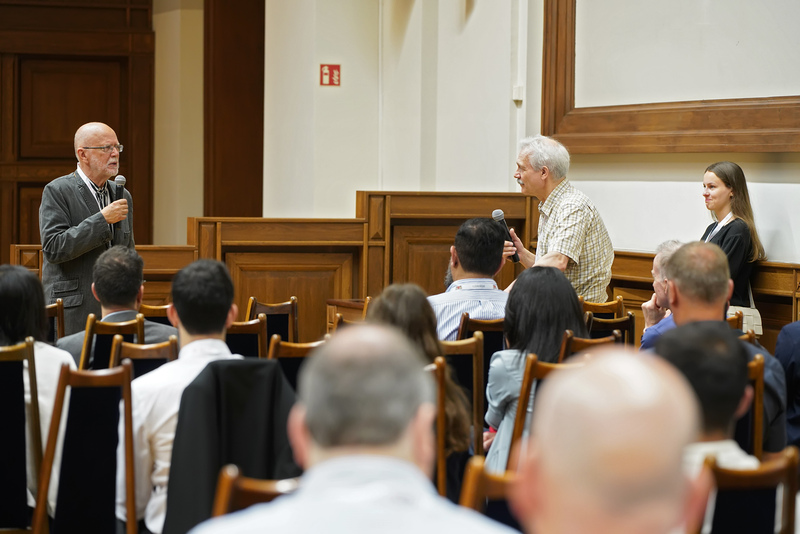
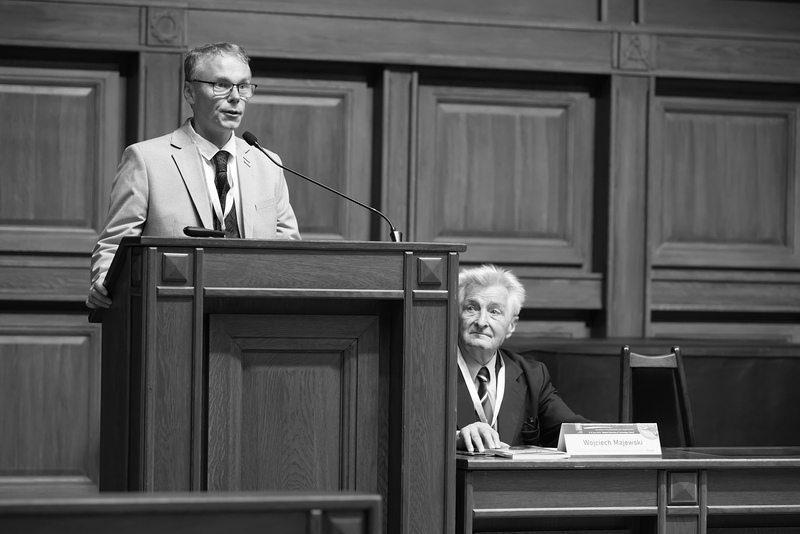
Award
For many years, the Ice Symposium has offered an award for the best young scientist, which is regarded as a prestigious distinction, often opening doors to renowned scientific institutions. To participate in the competition, applicants must not hold a doctoral degree at the time of their presentation, must present their work as the first author, and must be under 35 years of age. The competition committee consists of members from the scientific committee as well as members of the IAHR Ice Research Section.
This year, the award was presented ex aequo to two young scientists: Henrik Fiser from UiT – The Arctic University of Norway for his work Iceberg Drift Trajectories in the Barents Sea, from Remote Sensing, and Arash Rafat from Wilfrid Laurier University for his research In-situ Thermodynamics of Lake Ice Decay.
In recognition of his numerous outstanding technical contributions to the field of ice engineering and research, as well as his long-term support of IAHR activities, the Committee on Ice Research and Engineering proudly presented the 2024 Ice Research and Engineering Award to Prof. Matti Leppäranta.Prof. Leppäranta has been a dedicated member of the IAHR Technical Committee on Ice Research and Engineering for many years, during which he also served as its Chair. His leadership and expertise have been instrumental in advancing the field of ice research, and his significant contributions have had a lasting impact on both the scientific community and the IAHR organization. This prestigious award, granted every two years, recognizes exceptional individuals for their achievements in ice research and engineering, as well as their contributions to IAHR’s mission.
Next Congress
28th IAHR International Symposium on Ice, 2026, Shanghai, China. Info coming soon
Related
